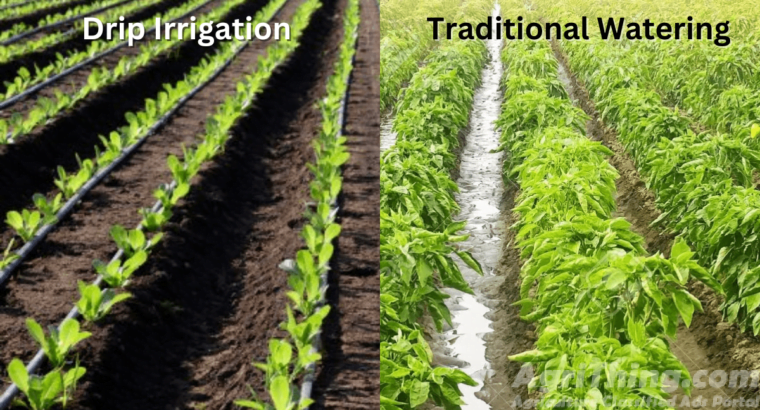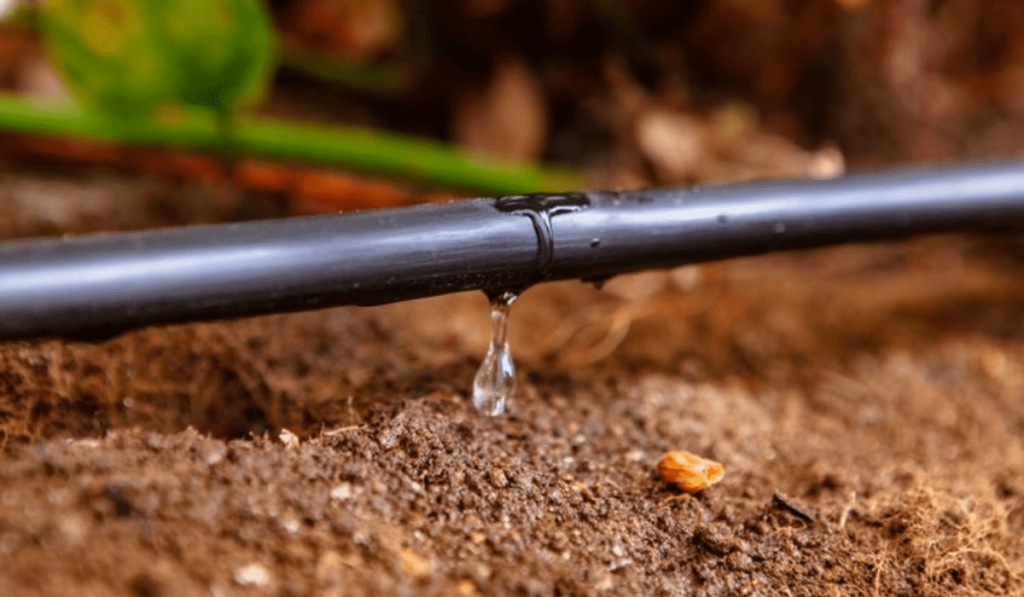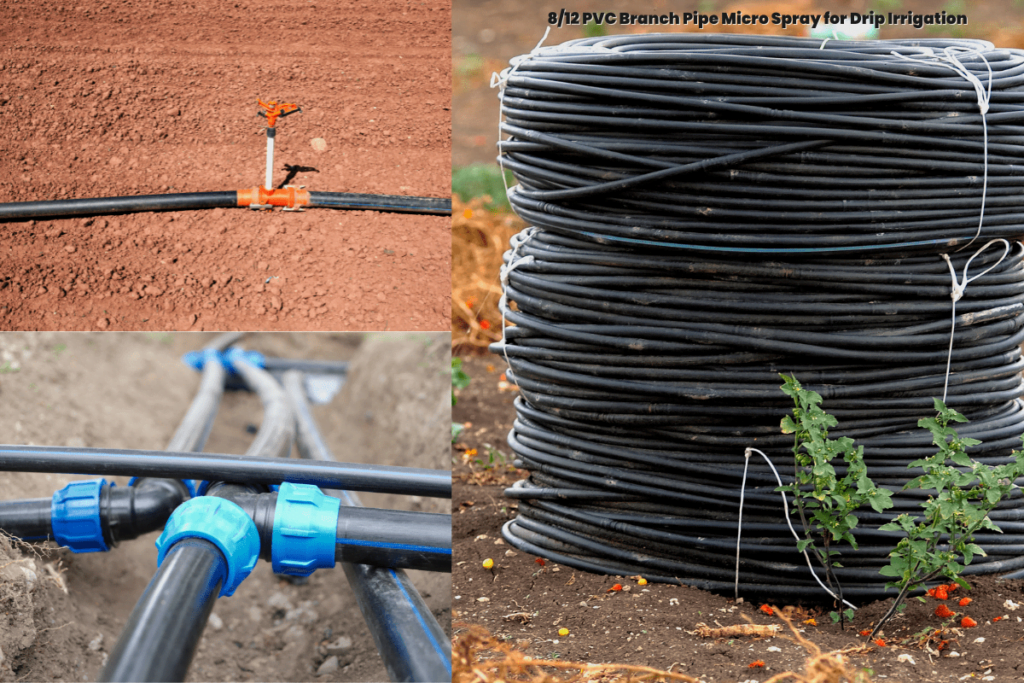Traditional Watering Methods vs Drip Irrigation: Savings Unleashed

Effective watering methods are crucial for plants to grow well and for farms to produce more. Two commonly used methods are drip irrigation and traditional watering. This article explains these approaches’ costs, advantages, disadvantages, and financial impact.
Table of Contents
Cost Factors in Irrigation
To better understand the costs of drip irrigation and traditional watering, it’s essential to consider the main factors contributing to an irrigation system’s overall expenses. These factors include the initial setup costs, water usage and efficiency, labor and maintenance expenses, and long-term investment and return on investment.
Drip Irrigation: Benefits and Costs
Drip irrigation is a modern method that brings water straight to the plant’s roots, reducing water loss from evaporation or runoff. This technique has many benefits and is popular among farmers and gardeners.
One of the most significant advantages of drip irrigation is how efficiently it uses water. By delivering water directly to the roots, drip systems save water and ensure plants get enough without wasting any. This method also helps save water in areas without much availability.
Drip irrigation also helps with weed control and prevents soil erosion. Giving water directly to the roots and not the surrounding soil stops weeds from growing. This means less manual weeding and fewer herbicides.
Moreover, drip irrigation allows the precise delivery of nutrients. Farmers can mix fertilisers or nutrients into the water so plants get what they need right at the roots. This helps plants grow healthier by absorbing and using the nutrients better.
There are some costs to consider with drip irrigation. Initially, you’ll need to buy drip lines, emitters, filters, and other equipment. If you need help setting it up, there may be labor costs. It would help to consider ongoing expenses like electricity and water, maintenance, and repairs.
Traditional Watering Methods: Benefits and Costs
People have been using traditional watering methods like sprinklers and watering cans for a long time because they’re simple and affordable. These methods are accessible to small-scale gardeners and farmers.
One of the advantages of traditional watering methods is how easy they are to set up and use. With essential equipment like sprinklers or watering cans, anyone can water their plants without special knowledge or infrastructure. Plus, the initial cost of traditional methods is relatively low compared to more advanced irrigation systems.
However, some things could be improved to traditional watering methods regarding costs. One concern is the amount of water used and wasted. For example, sprinklers spray water everywhere, leading to water running off and evaporating. This can result in higher water bills and inefficiency, especially in places where water is scarce.
Furthermore, traditional watering methods can lead to overwatering and nutrient loss. Since it’s hard to control where the water goes, it often reaches beyond the plant’s roots. This wastes water and causes valuable nutrients to seep deeper into the soil, affecting plant health and requiring more fertilisers.
Comparing Costs: Drip Irrigation vs Traditional Methods
Let’s compare the costs of drip irrigation and traditional watering methods to understand how they impact farmers and gardeners financially.
To begin with, the initial setup costs of drip irrigation systems are generally higher compared to traditional methods. Purchasing drip lines, emitters, filters, and other components can be costly, especially for more extensive operations. However, it’s essential to consider drip systems’ long-term advantages and potential return on investment.
When considering long-term costs, drip irrigation systems are often more cost-effective. Their water efficiency leads to significant savings in water usage and related expenses. Furthermore, the reduced need for manual labor in watering and weeding can result in substantial time and labor savings, enhancing overall operational efficiency.
Additionally, drip irrigation systems contribute to environmental sustainability by conserving water resources and reducing the reliance on chemical interventions. This can have long-term financial benefits, particularly as farmers face increasing water scarcity or stricter water usage and pollution control regulations.


Comparing water consumption of drip irrigation and traditional sprinklers
| Drip Irrigation | Traditional Sprinklers | |
|---|---|---|
| Water Consumption | Low | High |
| Efficiency | High | Medium |
| Water Savings | 30-50% | Less than drip |
| Targeted Delivery | Yes | No |
| Weed Growth | Reduced | Potential for growth |
| Plant Health | Improved | Depends on coverage |
| Soil Erosion | Minimized | Possible erosion |
Factors to Consider when Choosing an Irrigation Method
When deciding between drip irrigation and traditional watering methods, it’s essential to consider several factors:
Available resources and budget:
Assessing your financial capacity and the resources you have for installing and maintaining an irrigation system is crucial.
Crop type and water requirements:
Different crops have different water needs. Choosing an irrigation method that provides the right amount of water for optimal crop growth is essential.
Farm size and layout:
The size and layout of your farm will impact the practicality and efficiency of different irrigation systems. Consider what works best for your specific farm setup.
Soil conditions and topography:
Consider the type of soil you have, its drainage capabilities, and the topography of your land. These factors will influence water distribution and help prevent issues like soil erosion.
Cost-effective drip irrigation methods for small gardens
Drip irrigation is an efficient and cost-effective method for watering small gardens. It helps conserve water by delivering it directly to the plant’s roots, minimising evaporation and reducing water waste. Here are some cost-effective drip irrigation methods that you can consider for your small garden:
Drip Tape:
Drip tape is an affordable option for small gardens. It consists of a thin plastic tube with evenly spaced holes allowing water to drip. It is easy to install and can be used for row crops and individual plants.
Soaker Hoses:
Soaker hoses are another cost-effective option. They are made of porous material that allows water to seep out slowly along the entire length of the hose. You can place them around your plants or bury them under mulch for efficient watering.
Micro Sprinklers:
Small, low-pressure sprinklers deliver water in a fine mist or spray. They are suitable for watering small garden areas and can easily connect to a drip irrigation system. Micro sprinklers are cost-effective and provide good coverage for plants.
Drip Emitters:
Drip emitters are small devices that deliver water directly to the plant’s root zone. They can be attached to a main supply line or connected to a header line in a drip irrigation system. Drip emitters come in various flow rates, allowing you to customise the water delivery for different plants’ needs.
DIY Systems:
If you’re on a tight budget, you can create your drip irrigation system using recycled materials. For example, you can repurpose plastic bottles by making small holes in them and burying them near your plants. Fill the bottles with water, which will slowly seep through the holes, providing irrigation.
Rainwater Harvesting:
Utilising rainwater is an excellent cost-effective strategy for watering your small garden. Install a rain barrel or cistern to collect rainwater from your roof’s gutters. You can then connect a drip irrigation system to the rain barrel, providing an accessible and sustainable water source for your garden.


What is the environmental impact of traditional watering methods?
Traditional watering methods can harm the environment differently, mainly when used a lot or not used efficiently. Let’s look at some typical environmental problems caused by traditional watering methods:
Water Waste:
Traditional watering methods like overhead sprinklers or open hoses often wastewater. These methods don’t distribute water evenly, which causes too much water to run off or evaporate. This wastefulness adds to the problem of insufficient water, especially in places where water is already limited.
Energy Consumption:
Traditional watering methods that use mechanical pumps or electric systems consume energy. This energy consumption contributes to greenhouse gas emissions, especially if the energy comes from fossil fuels. The process of pumping water or operating irrigation systems requires a significant amount of energy, which harms the environment and contributes to climate change.
Soil Erosion:
When watering systems are poorly designed, they can cause soil erosion. Too much water flow or pressure can wash away the top layer of soil, which contains essential nutrients. This erosion disturbs the balance of the ecosystem and makes it unstable. Additionally, the eroded soil can end up in bodies of water, leading to sedimentation. This harms aquatic life and lowers the quality of water.
Chemical Runoff:
Traditional watering methods involve fertilisers or pesticides, which can add to chemical runoff. When there is too much water or heavy rainfall, these chemicals can be washed into nearby bodies of water, causing water pollution and harming aquatic organisms.
Disruption of Natural Water Cycles:
Traditional watering methods can interfere with the natural water cycles of an area. When there is excessive irrigation, it can artificially raise the water table, which means that groundwater resources get depleted. On the other hand, inadequate irrigation or inefficient watering can make the soil salty, reducing agricultural productivity.
Noise Pollution:
High-pressure sprinkler systems, commonly used in traditional watering methods, can create noise pollution. This noise can disrupt wildlife and hurt the balance of the ecosystem, especially in peaceful environments.
Conclusion
In conclusion, when comparing the costs of drip irrigation and traditional watering methods, it becomes clear that drip systems may require higher initial expenses. However, they offer significant long-term advantages and savings. Drip irrigation improves water efficiency, reduces labour needs, and allows better nutrient control, resulting in enhanced crop productivity and environmental sustainability. Nevertheless, the choice of irrigation method ultimately depends on the specific needs, available resources, and circumstances of each farming or gardening operation.
Get your 8/12 PVC Branch Pipe Micro Spray for Drip Irrigation, Garden Irrigation, and more at Agricomplex. Don’t wait, shop now!

Frequently Asked Questions
Can drip irrigation be used for all crops?
Drip irrigation works well for many crops, like fruits, vegetables, and fields. However, crops with shallow roots need extra attention.
Are there government incentives or grants for drip irrigation?
Check with local agricultural agencies for potential financial assistance or incentives for using water-efficient irrigation methods in your region.
How often should drip irrigation systems be maintained?
Regular maintenance of drip irrigation systems, including checking emitters, fixing leaks, and ensuring proper functionality, should be done based on water quality and usage.
Can traditional watering methods be used with drip irrigation?
Combining traditional watering methods with drip irrigation offers flexibility, targeted watering, and the efficiency of drip systems.
How long does a drip irrigation system last on average?
With proper care and maintenance, a drip irrigation system can last between 10 to 20 years.
Related Articles on Drip Irrigation
Essential Factors for Efficient Drip Line Irrigation

Experience the ultimate in water-efficient irrigation with Agrithing’s drip line irrigation solutions. Our advanced technology and high-quality products ensure precise and targeted water delivery, minimizing waste and maximizing crop yields. Discover the power of drip line irrigation at Agrithing and revolutionize your farming practices for optimal efficiency and sustainability.
Drip Irrigation for Small Spaces: Creative Solutions

Maximize Yield with Small Spaces: Discover the Efficiency of Drip Irrigation at Agrithing! Unleash the Potential of Every Inch with Precise Water Delivery and Optimal Nutrient Absorption. Boost Your Crop’s Health and Productivity in Limited Areas. Experience the Future of Farming Today!
Unveiling Water-Saving Power: Emitter-Based Irrigation Myths Exposed

Discover the ultimate water-saving solution with emitter-based irrigation at Agrithing. Our advanced systems ensure precise water delivery, maximizing efficiency and minimizing waste. Say goodbye to common myths and unleash the power of emitter-based irrigation for optimal crop health and yield. Visit Agrithing now and revolutionize your irrigation practices with our cutting-edge solutions!
People Also Asked
What is drip irrigation?
Drip irrigation is a method that delivers water directly to plant roots using tubes and emitters. This improves water efficiency and helps plants grow better.
How does traditional watering work?
Traditional watering usually involves manually applying water to the soil’s surface using sprinklers or hoses.
What are the benefits of drip irrigation?
Drip irrigation offers several benefits, including saving water, reducing weed growth, promoting healthier plants, and preventing soil erosion.
Are there any downsides to using drip irrigation?
Drip irrigation offers several benefits, including saving water, reducing weed growth, promoting healthier plants, and preventing soil erosion.
How much water can be saved with drip irrigation?
Drip irrigation can save 30% and 50% water compared to traditional watering methods.




Leave your comment